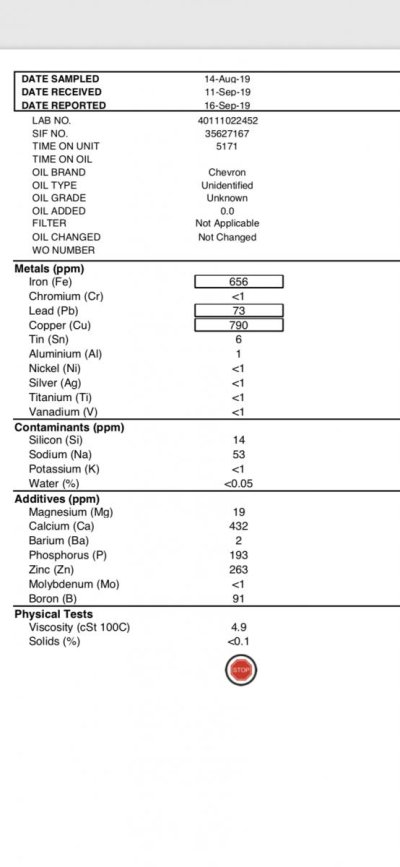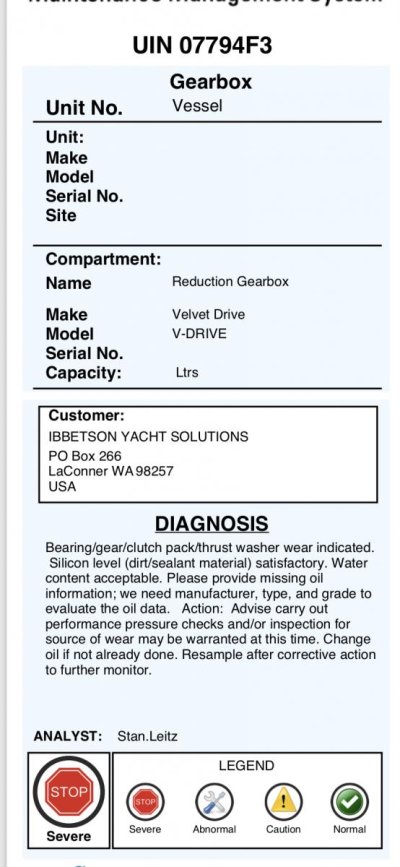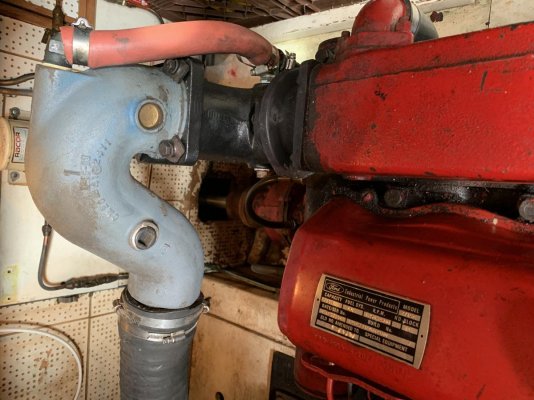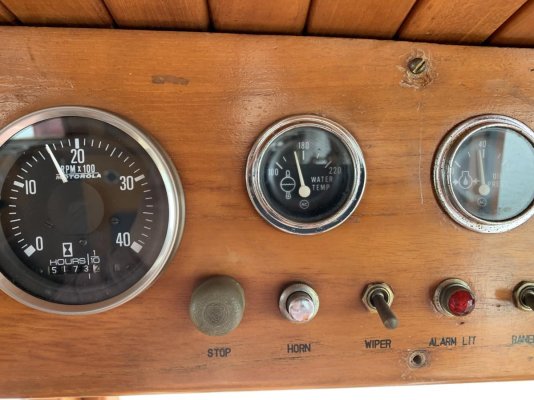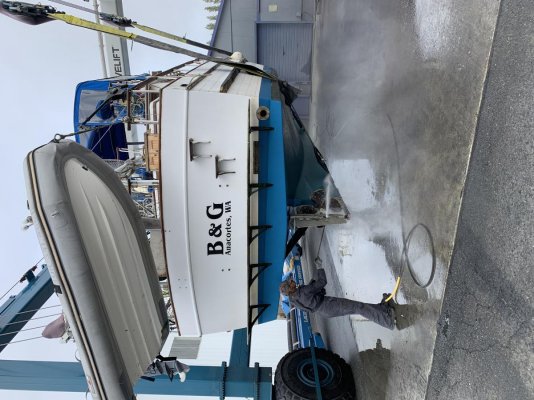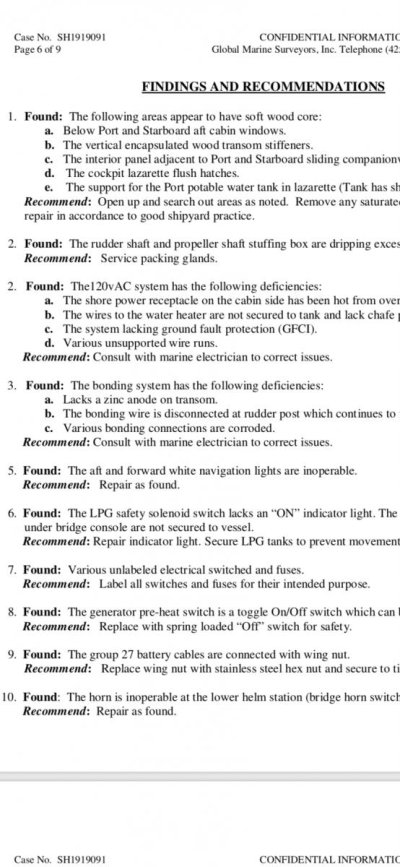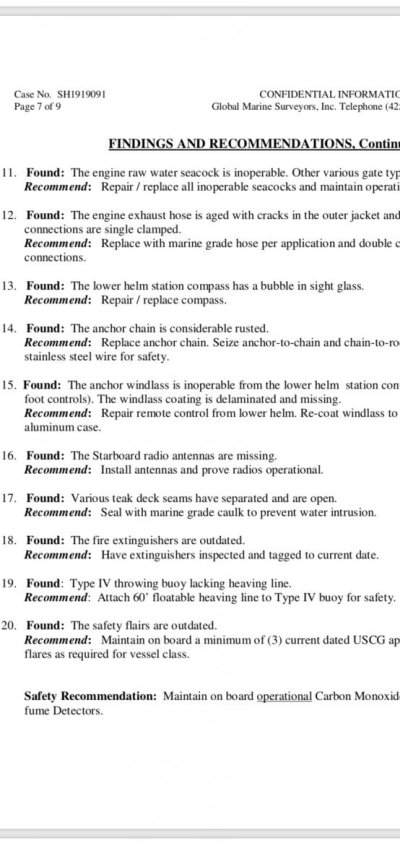All of this is really about whether you are up to doing the work, can afford to have it done, and the economics of your purchase...
First issue-
The lazarette holds 2 fresh water tanks. 1 of the tanks shifted because of rotted wood under it.
Also, the stern showed some area of rot around the posts that the swim step was screwed into. It seems to me that the only way to remove the water tank to fix the wood platform it is sitting on and to make sure it isn’t leaking is to cut the deck above it to pull the tank out, or cut the stern (because it probably needs to be fixed anyways) and pull the tank out through the hole in the stern.
Thoughts on bonding or lazarette?
Thanks
Bonding is a whole issue that I'm not a complete expert on. There are split opinions on not bonding, bonding everything, bonding the running gear only, etc. You should read up, learn more about it, and I'll leave that to some who know more about it that I do. Personally, my boat is very similar, and has its underwater metals bonded and protected by zincs. Its has that done by having most of them bonded with common wiring to a common zinc plate on the transom. My rudders have their own zincs and my shafts have their own.
Regarding the rot in the lazarette and transom. It really depends on what your skills are and what the the situation in the space are. You should first determine what has caused the rot, where the moisture has come from that has caused the rot in the two places, and seek to mitigate that. Then repair it. If the tank was sitting on plywood, that isn't good for it, and it probably needs a better mounting situation anyway - future moisture sitting against the tank can cause corrosion and leaks, if you don't have that already. It may be a matter of removing the tank, or it may be a matter of inserting non-wood supports instead without removing it, without us seeing it would couldn't advise you possible directions.
Regarding the rot in the transom supporting the swim steps - I'm assuming that is some wood/fiberglass structure on the inside of the transom that the swim step supports are through-bolted into. If that is the case, that is a fiberglass/wood core repair. Fairly easy for someone who has worked with those materials, but since its where it is, might have to occur during a haul since its likely slightly below the waterline. This comment is coming from someone who just glassed his own anchor locker since it was never done from the factory, though - take it with a grain of salt. If you've never worked with fiberglass / polyester resin or epoxy then its a bit daunting.
Third issue-
Under way we got these temps with an IR heat gun. (I will include a picture and you guys can try to figure out what I mean

).
Water temp gauge 170
Grey p trap looking thing 77
black 90 degree pipe 99
black straight connection 211
red manifold exhaust 156
I also measured the 6 big bolts between the manifold exhaust and the engine block. Starting with the closest to the bow-
177
181
202
184
199
202
While at WOT water temp gauge got to 180 and the black pipes off the manifold exhaust got close to 300 degrees and the surveyor said he saw “bubbling” coming from the valve cover area. It got a little smoky as well.
Ok, so 3 issues is about 6?. Any thoughts on temps, or are those normal?
Thanks
So, I think you are intent on buying a diesel trawler. Look for some books on engines and boat maintenance. There are some great threads here that list some, it will help give you some base knowledge and terminology. Below I reposted your pic of the exhaust end of the engine with some colored arrows to clarify your temps and descriptions.
Your exhaust is a Chrysler marine lower and upper swivel exhaust that is mounted to the Leman exhaust manifold with a custom made adapter. I have not found the adapters are commercially available anywhere. When I first bought my boat, I thought mine was cobbled together, but I've since found a historical Lehman sales brochure showing that exhaust, so they must have used or offered it as at least an option at some point. Here is a link to a page showing one possible parts source for the Chrysler exhaust parts that puts proper names to them.
Marineparts.com - Barr Manifolds Risers Chrysler V8 - 361,383,400,413,426 and 440 C.I.D 1959 and Up Log Style
The parts you called out, and what I THINK you are referring to as follows:
Green Arrow - Grey P Trap - Exhaust Riser Upper Elbow: 77 degrees is an appropriate temp. This piece has an outer water jacket that has seawater circulating through it from both the lower elbow (there is an o-ring sealed joint between the two) and from the red hose. It has the largest volume of your raw water and should be the coolest, and is showering the exhaust right before it hits the exhaust hose (purple arrow.) The exhaust hose shouldn't be much more than 80 degrees, either.
Blue Arrow - Black 90 Degree Pipe - Exhaust Riser Lower Elbow: I'm not sure on this temp. I don't recall what our temps were, and we changed ours out. I can tell you this, this piece gets less cooling water in it, because it has a smaller inlet, and its is closer to the exhaust heat, so I'm not surprised it is hotter. 99 deg does not seem alarming to me. It appears this boat has both halves of the riser plumbed which is proper. Mine was not.
Red Arrow - Black straight connection - Lehman to Chrysler Adapter: I think this temp is what it is. This piece is one of two reasons Brian Smith at American Diesel does not recommend this type of exhaust on the Ford Lehman today. That adapter is not able to be cooled, and the way the Lehman exhaust manifold is manufactured, the flange of that adapter (with a gasket) is sitting against the closed cooling system and could potentially boil the coolant. My boat had lived with it likely its entire life until this past fall though. As a new owner I chose to change it, it wasn't a deal changer or a negotiation point for me.
Yellow Arrow - black pipes off the manifold exhaust - is this what you are talking about being 300 degrees? I've never put the thermometer on this spot before. I always check my manifolds, my alternators, transmisssions, exhaust hoses, raw water hoses, and my water lift mufflers looking for consistent temps (engine to engine and from check to check.) Its not a spot I've ever looked at for temp though.
Regarding the temps of the exhaust manifold, its main bolts, and the engine temp gauge - the Lehman owners manual specifies operating temps from 175 to 195 degrees with 195 being optimum. That is the indicated temp of the water at the sensing location, so seeing some variance is expected. Assuming the 300 degree reading is not some kind of anomaly I'm missing I'm not seeing anything crazy here, assuming this was WOT for more than 2-3 minutes.
Regarding the bubbling valve cover, the question for the surveyor is what was the bubbling? was it built up oil heating up, or blow by coming out past a loosely fitting valve cover gasket, or? Its not surprising to me the boat started to smoke a little as much as its been sitting; especially if they put some paint on that adapter piece of the exhaust.
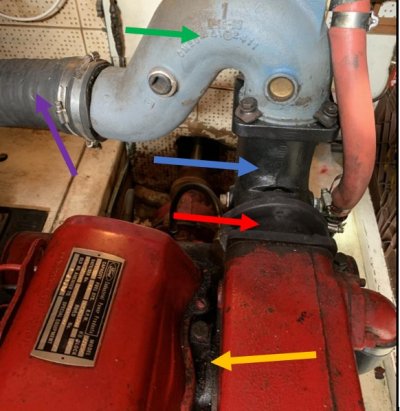
How did the transmission come out as far as your concerns with the oil analysis? How did she shift and handle?
Wishing you the best as you decide if this is the boat for you!
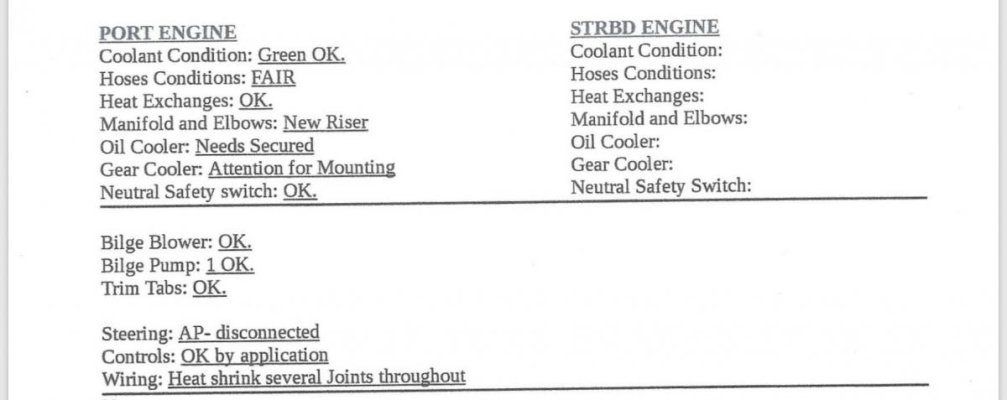 819AE136-C8EA-4B75-BF81-309498F4630C.jpg52.4 KB · Views: 168
819AE136-C8EA-4B75-BF81-309498F4630C.jpg52.4 KB · Views: 168 4886D7C2-412F-4C58-908C-6B558E68455D.jpg20.8 KB · Views: 174
4886D7C2-412F-4C58-908C-6B558E68455D.jpg20.8 KB · Views: 174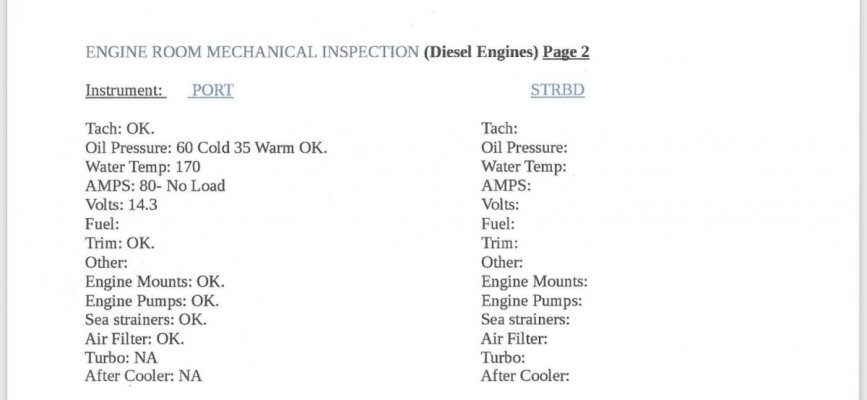 0E166363-C7EA-4112-9F44-44E40FF9BD64.jpg43.5 KB · Views: 184
0E166363-C7EA-4112-9F44-44E40FF9BD64.jpg43.5 KB · Views: 184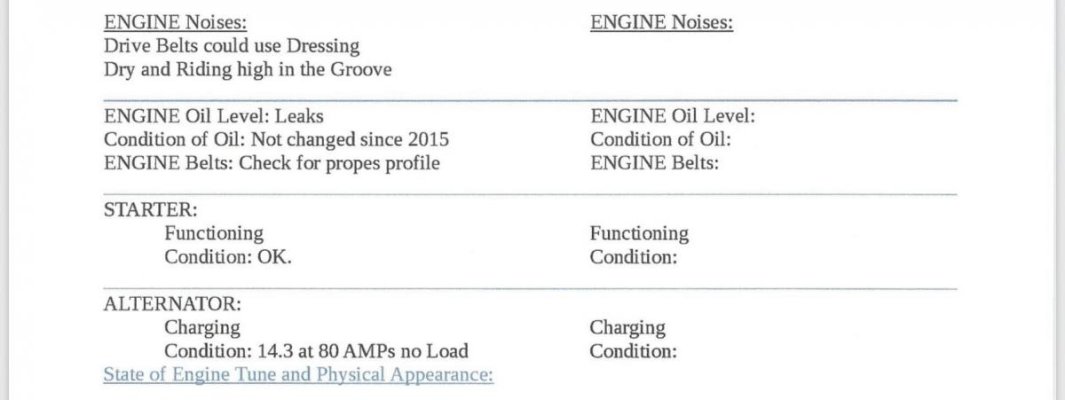 2F2E6EF0-79B7-4B94-8404-29BE1BE65D53.jpg46.7 KB · Views: 164
2F2E6EF0-79B7-4B94-8404-29BE1BE65D53.jpg46.7 KB · Views: 164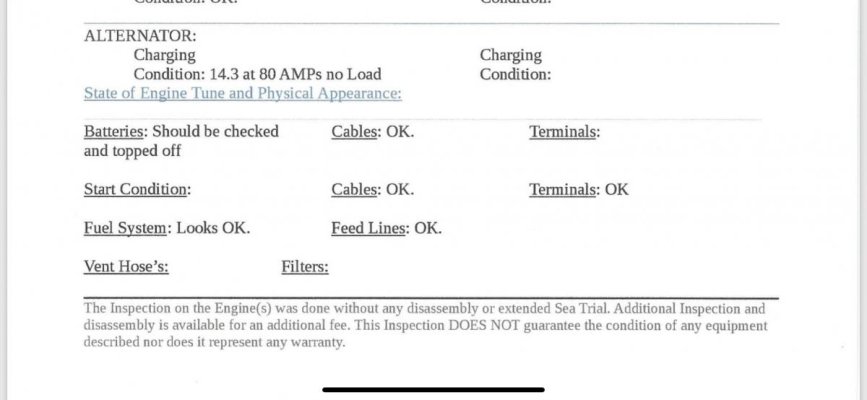 FF884195-8D8F-4AB8-A1AD-97AC2E420F73.jpg53 KB · Views: 157
FF884195-8D8F-4AB8-A1AD-97AC2E420F73.jpg53 KB · Views: 157
 , or will have one. Where the boat is to get a legitimate sea trial in you'll have to spend some time to get out of the no wake area so you can run the engine up to WOT for a bit to make sure you don't have any cooling or other issues.
, or will have one. Where the boat is to get a legitimate sea trial in you'll have to spend some time to get out of the no wake area so you can run the engine up to WOT for a bit to make sure you don't have any cooling or other issues.